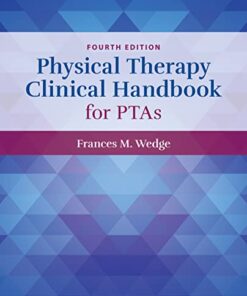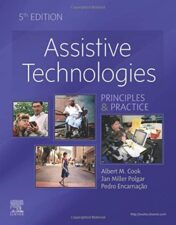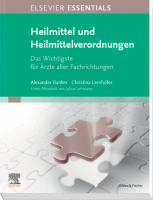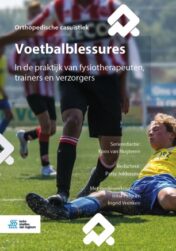- Paperback: 616 pages
- Publisher: Churchill Livingstone; 5 edition (October 29, 2013)
- Language: English
- Type : PDF ORIGINAL
- ==========================+======================
-
Note : We will send ebook download link after confirmation of payment via paypal success
Payment methods: Visa or master card (Paypal)
Maitland’s Peripheral Manipulation: Management of Neuromusculoskeletal Disorders – Volume 2, 5e 5th Edition
$10
by Elly Hengeveld
- World-leading experts provide evidence relating the Maitland Concept to clinical practice
- Evidence supporting practice
- Covers both subjective and physical examination
- Best practice management using mobilization and manipulation
- Case studies – how and when to integrate the Maitland Concept into clinical practice
- Chapter-based learning outcomes, keywords and glossaries
- Companion website – Maitland’s Manipulation eResources (www.maitlandsresources.com)
- Expert perspectives and supporting evidence
- Case studies
- Companion website – www.maitlandsresources.com – containing:
- Video Bank of over 480 video clips showing examination and treatment techniques
- Image Bank of over 1,000 illustrations
- Interactive case studies
- Over 200 MCQs
- Bonus chapters on additional principles and techniques of examination / treatment
- Weblink references to abstracts
Maitland’s Peripheral Manipulation: Management of Neuromusculoskeletal Disorders – Volume 2, 5e 5th Edition
The legacy of Geoff Maitland and his seminal work, Peripheral Manipulation, continues in this fifth edition, with Elly Hengeveld and Kevin Banks leading an international team of experts who demonstrate how to manage peripheral neuromusculoskeletal disorders using the principles and practice of the Maitland Concept. Together, they ensure the heart of the Concept beats on by promoting collaborative decision-making with the patient at centre and emphasizing the art and science of observation, listening, palpation and movement skills.
A key feature of the new edition focuses on a more evidence-based and analytical view of the role of mobilization and manipulation in clinical practice. The authors have written in a way that reflects their application of the Maitland Concept and how they have integrated techniques in the light of advancement in professional knowledge. Each chapter stands alone as a ‘master class’.
The text is systematically arranged focusing on detailed assessment, clinical reasoning and re-assessment to determine the physical dysfunction and efficacy of manipulative physiotherapy techniques, while also advocating continuous communication and interaction. Techniques of passive mobilization are also described, specifically designed around the individual patient’s condition.
All the chapters are written from a clinical perspective and review the evidence which informs how to deal with and manage peripheral joint pain as they present to the practitioner. Furthermore, each peripheral region (craniomandibular, upper limbs and lower limbs) is considered from the point of view of best practice in analysing and hypothesising subjective data, examination, treatment and management of peripheral pain conditions.
Brand new to the fifth edition is the addition of a companion website – Maitland’s Manipulation eResources (www.maitlandsresources.com) – providing access to a range of valuable learning materials which include videos, MCQs, interactive case studies, research links, and bonus chapters.
“Overall this text would be an excellent resource to any practising physiotherapist or health professional within musculoskeletal and orthopaedics from the new graduate to the experienced clinician.” Tracy Ward, Senior Physiotherapist and Clinical Pilates Specialist, BMI Healthcare Albyn Hospital, Aberdeen, Oct 14
Product Details |
Related Products
PHYSICAL MEDICINE & REHABILITATION BOOKS
Fisioterapia en procesos oncológicos y quirúrgicos de cabeza y cuello (Original PDF from Publisher)
PHYSICAL MEDICINE & REHABILITATION BOOKS
Toutes les clés pour réussir en STAPS. Mention « Éducation Motricité » (Original PDF from Publisher)
PHYSICAL MEDICINE & REHABILITATION BOOKS
PHYSICAL MEDICINE & REHABILITATION BOOKS
Médecine du ski: Pratiques, recommandations, prévention (Original PDF from Publisher)
PHYSICAL MEDICINE & REHABILITATION BOOKS
Soins primaires en kinésithérapie (Original PDF from Publisher)
PHYSICAL MEDICINE & REHABILITATION BOOKS
Whittle’s Gait Analysis, 6th edition (Original PDF from Publisher)
PHYSICAL MEDICINE & REHABILITATION BOOKS
Physiotherapy for the Hip Joint (Original PDF from Publisher)
PHYSICAL MEDICINE & REHABILITATION BOOKS
PHYSICAL MEDICINE & REHABILITATION BOOKS
Oncology Rehabilitation: A Comprehensive Guidebook for Clinicians (Original PDF from Publisher)
PHYSICAL MEDICINE & REHABILITATION BOOKS
PHYSICAL MEDICINE & REHABILITATION BOOKS
Campbell’s Physical Therapy for Children, 6th edition (Original PDF from Publisher)
PHYSICAL MEDICINE & REHABILITATION BOOKS
Electroterapia práctica (2ª ed.): Avances en investigación clínica (Original PDF from Publisher)
PHYSICAL MEDICINE & REHABILITATION BOOKS
Foundations of Kinesiology, 2nd Edition (Original PDF from Publisher)
PHYSICAL MEDICINE & REHABILITATION BOOKS
Guide to Evidence-Based Physical Therapist Practice, 5th Edition (Original PDF from Publisher)
PHYSICAL MEDICINE & REHABILITATION BOOKS
Physical Therapy Clinical Handbook for PTAs, 4th Edition (Original PDF from Publisher)
PHYSICAL MEDICINE & REHABILITATION BOOKS
PHYSICAL MEDICINE & REHABILITATION BOOKS
PHYSICAL MEDICINE & REHABILITATION BOOKS
Fascial Manipulation ® for Internal Dysfunctions – Practical Part (Original PDF from Publisher)
PHYSICAL MEDICINE & REHABILITATION BOOKS
PHYSICAL MEDICINE & REHABILITATION BOOKS
Practical Evidence-Based Physiotherapy,3rd edition 2022 Original PDF
PHYSICAL MEDICINE & REHABILITATION BOOKS
PHYSICAL MEDICINE & REHABILITATION BOOKS
Therapeutic Agents for the Physical Therapist Assistant 2022 Original PDF
PHYSICAL MEDICINE & REHABILITATION BOOKS
PHYSICAL MEDICINE & REHABILITATION BOOKS
PHYSICAL MEDICINE & REHABILITATION BOOKS
PHYSICAL MEDICINE & REHABILITATION BOOKS
Hip and Knee Pain Disorders Integrating manual therapy and exercise 2022 Original pdf
PHYSICAL MEDICINE & REHABILITATION BOOKS
Kinetic Control Revised Edition The Management of Uncontrolled Movement 2020 Original pdf
PHYSICAL MEDICINE & REHABILITATION BOOKS
Goodman and Fuller’s Pathology: Implications for the Physical Therapist 5th Ed 2022 Original PDF
PHYSICAL MEDICINE & REHABILITATION BOOKS
PHYSICAL MEDICINE & REHABILITATION BOOKS
Analyzing Scoliosis: The Pilates Instructor’s Guide to Scoliosis 2019 Original PDF
PHYSICAL MEDICINE & REHABILITATION BOOKS
PHYSICAL MEDICINE & REHABILITATION BOOKS
PHYSICAL MEDICINE & REHABILITATION BOOKS
Ultrasonography for the Upper Limb Surgeon 2022 Original pdf+videos
PHYSICAL MEDICINE & REHABILITATION BOOKS
Clinical Guide to Musculoskeletal Medicine A Multidisciplinary Approach 2022 Original pdf
PHYSICAL MEDICINE & REHABILITATION BOOKS
Evidenzbasierte Elektrotherapie Theorie und Praxis 2022 Original pdf+videos
PHYSICAL MEDICINE & REHABILITATION BOOKS
Cerebral Palsy A Practical Guide for Rehabilitation Professionals 2022 Original pdf
PHYSICAL MEDICINE & REHABILITATION BOOKS
Fundamental Orthopedic Management for the Physical Therapist Assistant 2021 Original pdf
PHYSICAL MEDICINE & REHABILITATION BOOKS
PHYSICAL MEDICINE & REHABILITATION BOOKS
PHYSICAL MEDICINE & REHABILITATION BOOKS
A Practical Approach to Interdisciplinary Complex Rehabilitation 2022 EPUB & converted pdf
PHYSICAL MEDICINE & REHABILITATION BOOKS
PHYSICAL MEDICINE & REHABILITATION BOOKS
PHYSICAL MEDICINE & REHABILITATION BOOKS
Physical Therapist Assistant Examination Review and Test-Taking Skills 2022 Original PDF
PHYSICAL MEDICINE & REHABILITATION BOOKS
PHYSICAL MEDICINE & REHABILITATION BOOKS
Outcome-Based Massage: Across the Continuum of Care, 4th Edition 2022 EPUB + Converted PDF
PHYSICAL MEDICINE & REHABILITATION BOOKS
PHYSICAL MEDICINE & REHABILITATION BOOKS
Assistive Technologies: Principles and Practice, 5th edition 2020 Original PDF
PHYSICAL MEDICINE & REHABILITATION BOOKS
Dutton’s Introductory Skills and Procedures for the Physical Therapist Assistant 2021 Original PDF
PHYSICAL MEDICINE & REHABILITATION BOOKS
Braddom. Medicina física y rehabilitación, 6th edition 2022 Original PDF
PHYSICAL MEDICINE & REHABILITATION BOOKS
Cardiovascular and Pulmonary Physical Therapy: Evidence to Practice, 6th edition 2021 True PDF
PHYSICAL MEDICINE & REHABILITATION BOOKS
Essentials of Cardiopulmonary Physical Therapy, 5th edition 2022 Original PDF
PHYSICAL MEDICINE & REHABILITATION BOOKS
Manual Physical Therapy of the Spine, 3rd edition 2021 Original PDF
PHYSICAL MEDICINE & REHABILITATION BOOKS
PHYSICAL MEDICINE & REHABILITATION BOOKS
PHYSICAL MEDICINE & REHABILITATION BOOKS
Sleep Medicine and Physical Therapy A Comprehensive Guide for Practitioners 2022 Original pdf
PHYSICAL MEDICINE & REHABILITATION BOOKS
Rehabilitation Methodology and Strategies A Study Guide for Physiotherapists 2022 Original pdf
PHYSICAL MEDICINE & REHABILITATION BOOKS
Clinical Case Studies Across the Medical Continuum for Physical Therapists 2021 Original PDF
PHYSICAL MEDICINE & REHABILITATION BOOKS
Telerehabilitation: Principles and Practice 2021 Original pdf
PHYSICAL MEDICINE & REHABILITATION BOOKS
PHYSICAL MEDICINE & REHABILITATION BOOKS
Orthopaedics for Physician Assistants 2nd Edition 2021 Original pdf
PHYSICAL MEDICINE & REHABILITATION BOOKS
Berührende Pflege – Therapeutic Touch Wirkung und Techniken 2021 Original pdf
PHYSICAL MEDICINE & REHABILITATION BOOKS
PHYSICAL MEDICINE & REHABILITATION BOOKS
Kinésithérapie de la Face, du Crâne et du Cou 2015 Original pdf
PHYSICAL MEDICINE & REHABILITATION BOOKS
Guide D’isocinétisme Des Concepts Aux Conditions Sportives et Pathologiques 2016 Original pdf
PHYSICAL MEDICINE & REHABILITATION BOOKS
Functional Atlas of the Human Fascial System 2015 Original pdf
PHYSICAL MEDICINE & REHABILITATION BOOKS
PHYSICAL MEDICINE & REHABILITATION BOOKS
PHYSICAL MEDICINE & REHABILITATION BOOKS
PHYSICAL MEDICINE & REHABILITATION BOOKS
Differenziertes Krafttraining Mit Schwerpunkt Wirbelsäule 2020 Original pdf
PHYSICAL MEDICINE & REHABILITATION BOOKS
Praxisbuch Myofasziale Triggerpunkte Diagnostik – Therapie – Wirkungen 2020 Original pdf
PHYSICAL MEDICINE & REHABILITATION BOOKS
PHYSICAL MEDICINE & REHABILITATION BOOKS
PHYSICAL MEDICINE & REHABILITATION BOOKS
Medizinisches Aufbautraining 2015 Medizinisches Aufbautraining 2015 Original pdf
PHYSICAL MEDICINE & REHABILITATION BOOKS
Manipulations des Dysfonctions Pelviennes Féminines 2016 Original pdf
PHYSICAL MEDICINE & REHABILITATION BOOKS
PHYSICAL MEDICINE & REHABILITATION BOOKS
A Comprehensive Guide to Geriatric Rehabilitation 2015 Original pdf
PHYSICAL MEDICINE & REHABILITATION BOOKS
Braddom’s Rehabilitation Care: A Clinical Handbook 2018 Original pdf
PHYSICAL MEDICINE & REHABILITATION BOOKS
De la Biomécanique à la Manipulation Ostéo-Articulaire. Thorax et Rachis Cervical 2017 Original pdf
PHYSICAL MEDICINE & REHABILITATION BOOKS
PHYSICAL MEDICINE & REHABILITATION BOOKS
PHYSICAL MEDICINE & REHABILITATION BOOKS
PHYSICAL MEDICINE & REHABILITATION BOOKS
PHYSICAL MEDICINE & REHABILITATION BOOKS
Aphasie ICF-orientierte Diagnostik und Therapie 2021 Original pdf+videos
PHYSICAL MEDICINE & REHABILITATION BOOKS
Hip Preservation Surgery Open, Arthroscopic, and Endoscopic Techniques 2020 Original pdf+videos
PHYSICAL MEDICINE & REHABILITATION BOOKS
Shoulder Arthroplasty The Shoulder Club Guide 2020 Original pdf
PHYSICAL MEDICINE & REHABILITATION BOOKS
PHYSICAL MEDICINE & REHABILITATION BOOKS
Ratgeber neue Hüfte, neues Knie Aktiv nach der Hüft- oder Kniegelenksoperation 2020 Original pdf
PHYSICAL MEDICINE & REHABILITATION BOOKS
Praxisbuch Biofeedback und Neurofeedback 2020 Original pdf+videos
PHYSICAL MEDICINE & REHABILITATION BOOKS
Myofasziale Schmerzen und Funktionsstörungen Diagnostik und Therapie 2020 Original pdf
PHYSICAL MEDICINE & REHABILITATION BOOKS
Fysiotherapie bij peesaandoeningen Deel 2: bovenste extremiteit 2020 Original pdf
PHYSICAL MEDICINE & REHABILITATION BOOKS
Voetbalblessures In de praktijk van fysiotherapeuten, trainers en verzorgers 2020 Original pdf
PHYSICAL MEDICINE & REHABILITATION BOOKS
PHYSICAL MEDICINE & REHABILITATION BOOKS
Ultrasound for Interventional Pain Management An Illustrated Procedural Guide 2020 Original pdf
PHYSICAL MEDICINE & REHABILITATION BOOKS
Peritoneale Adhäsionen Fasziale Behandlung nach dem Liedler-Konzept 2020 Original pdf+videos
PHYSICAL MEDICINE & REHABILITATION BOOKS
PHYSICAL MEDICINE & REHABILITATION BOOKS
PHYSICAL MEDICINE & REHABILITATION BOOKS
Musculoskeletal Interventions: Techniques for Therapeutic Exercise, Fourth Ed ORIGINAL PDF
PHYSICAL MEDICINE & REHABILITATION BOOKS
PHYSICAL MEDICINE & REHABILITATION BOOKS
PHYSICAL MEDICINE & REHABILITATION BOOKS
Spiegeltherapie in Physiotherapie und Ergotherapie 2021 ORIGINAL PDF







































































































